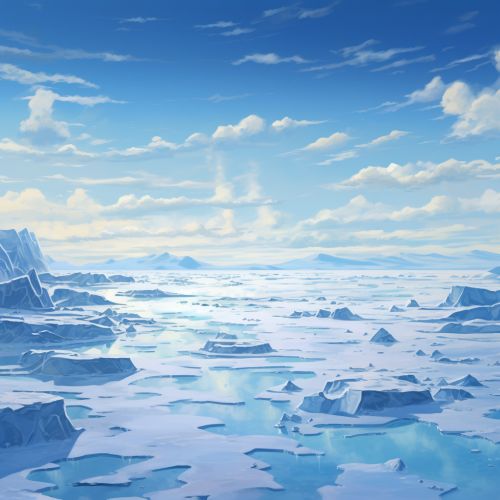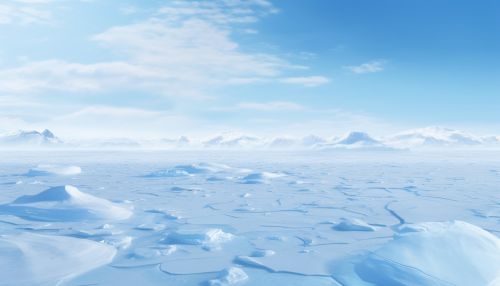Ice sheet
Introduction
An ice sheet is a mass of glacial ice that covers surrounding terrain and is greater than 50,000 square kilometers (19,000 sq mi). The only current ice sheets are in Antarctica and Greenland; during the last ice age at Last Glacial Maximum (LGM) the Laurentide ice sheet covered much of North America, the Weichselian ice sheet covered northern Europe and the Patagonian Ice Sheet covered southern South America.


Formation
Ice sheets form from accumulated snowfall that, through compaction, becomes denser over time. When the accumulated snowfall exceeds ablation, an ice sheet forms. The process of ice sheet formation is called glaciation, and the cycle of ice sheets growing and shrinking due to climate change is known as glaciation cycles.
Structure and Dynamics
Ice sheets are structured in layers, with the densest ice at the bottom and the least dense at the top. The bottom layers are compressed by the weight of the ice above, causing them to become denser. The top layers are less dense due to the lower pressure. The movement of ice sheets is influenced by the underlying topography, the temperature at the base of the ice sheet, and the amount of water present.
Impact on Global Climate
Ice sheets have a significant impact on the global climate. They reflect sunlight back into space, which helps to cool the Earth. This is known as the albedo effect. When ice sheets melt, they release freshwater into the oceans, which can disrupt ocean currents and affect global climate patterns.
Ice Sheets and Sea Level Rise
The melting of ice sheets contributes to sea level rise. When ice on land melts, it adds more water to the oceans. This can lead to coastal flooding and the displacement of communities. The rate at which ice sheets are melting is a key factor in predicting future sea level rise.
Ice Sheets and Climate Change
Climate change is causing ice sheets to melt at an accelerated rate. This is due to increasing temperatures, changes in precipitation patterns, and the effects of soot and dust on the albedo of the ice. The loss of ice sheets is one of the most visible and dramatic effects of climate change.
